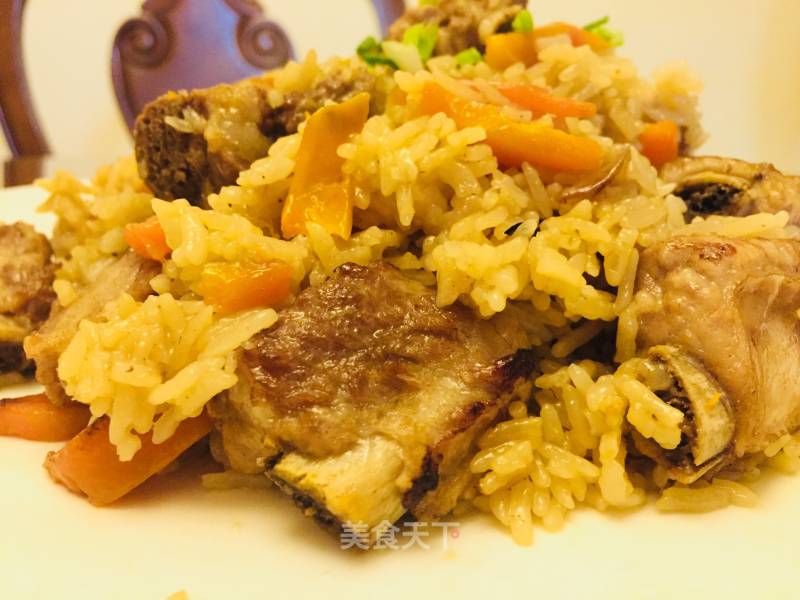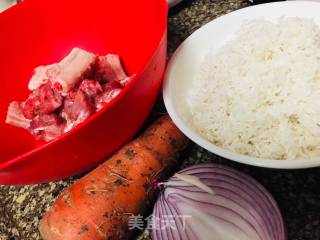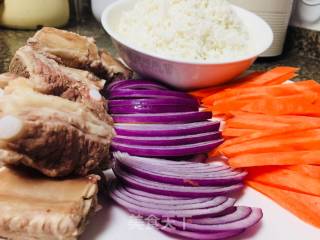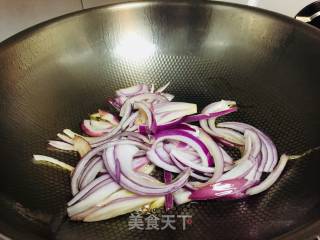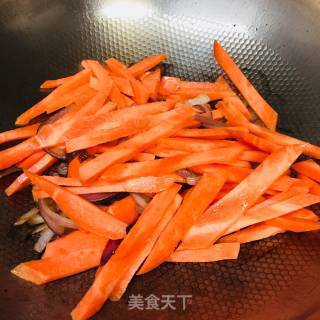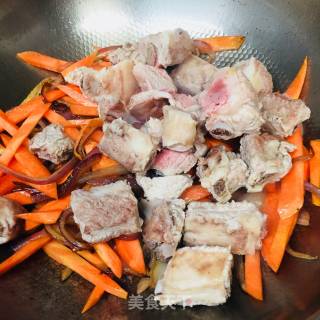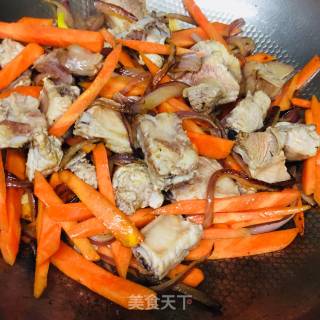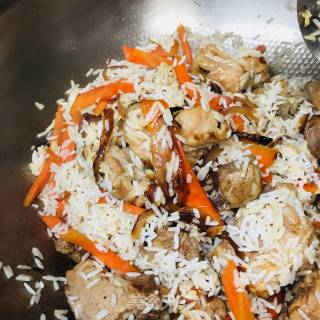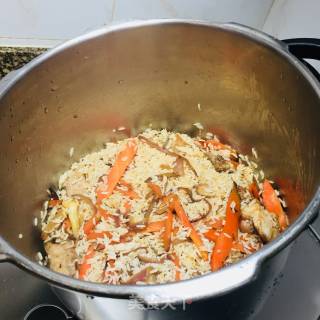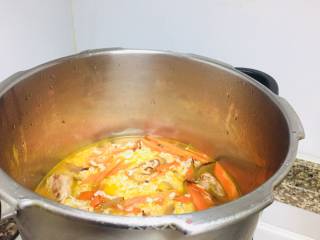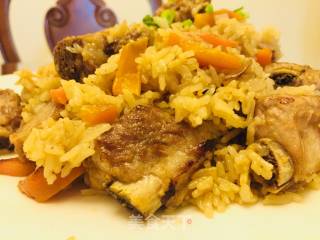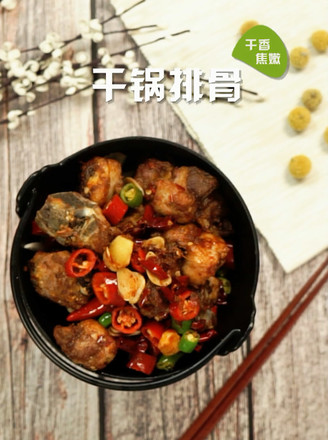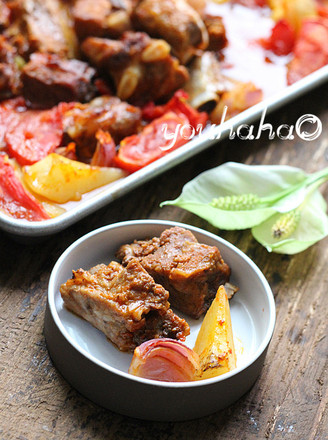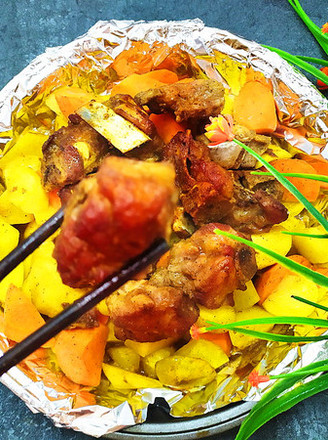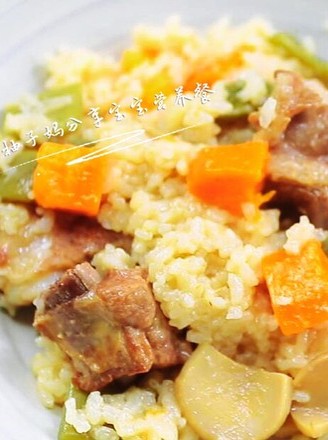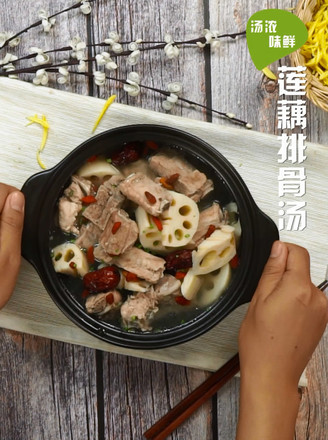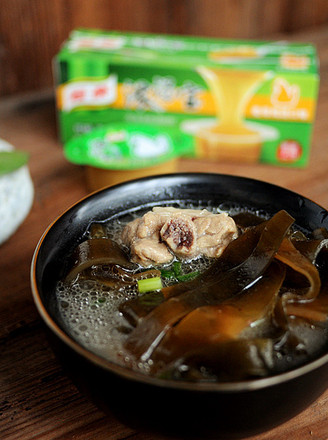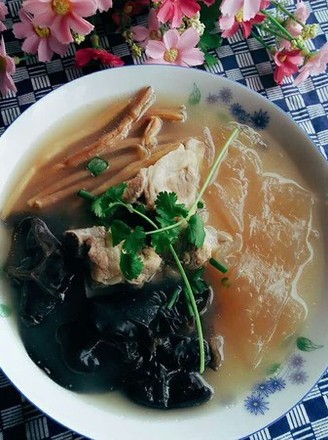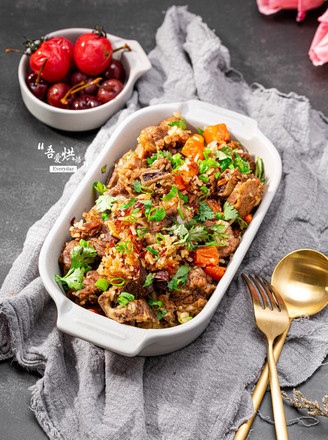Xinjiang Hand Pilaf
1.
Prepare ingredients: 600 grams of ribs, one carrot, 200 grams of long-grain basmati rice, and half a lamb onion.
2.
Soak the rice in water for a few minutes and then wash it for later use. Peel the carrots, wash and cut into large shreds, wash and shred the mutton onions, wash the ribs and place in a pot, blanch in boiling water, remove the water and set aside.
3.
Heat oil in the bottom of the pan and sauté the onions until fragrant.
4.
Fry the onion for a nice aroma, add shredded carrot and fry a few times.
5.
Add the ribs again, stir fry evenly, add an appropriate amount of water and cook for a while.
6.
Add the ribs again, stir fry evenly, add an appropriate amount of water and cook for a while.
7.
Add the soaked and washed long-grain fragrant rice, stir-fry evenly, and season with salt.
8.
Pour all the ingredients into the pressure cooker.
9.
Pour all the ingredients into the pressure cooker, add an appropriate amount of water, gently press a few times with chopsticks, and shake evenly. At this time, the water is almost at the same level as the meter, and the amount of water added varies according to the length of the soaking time. Put the lid on the pressure cooker and start calculating the time for ten minutes on medium heat. When the air is turned on, turn down the heat and cook until the time is up to turn off the heat. Wait for the gas to disappear before opening it for consumption.
10.
Xinjiang radish ribs hand pilaf, (I changed the lamb to the ribs).
11.
Enjoy the fun of food together.
Tips:
1. The rice is soaked for a long time, the ribs are cooked, the water in the pressure cooker can be added to the same level as the ingredients,
2. The rice is not soaked, the ribs are not boiled, and the water is relatively higher at this time.
3. Put all the ingredients in the pressure cooker and use chopsticks to gently press them, shake them evenly, then close the lid and turn on the fire for 10 minutes, turn on the air and turn down the fire, turn off the fire when the time is up, and wait until the air is gone before turning it on for consumption.

